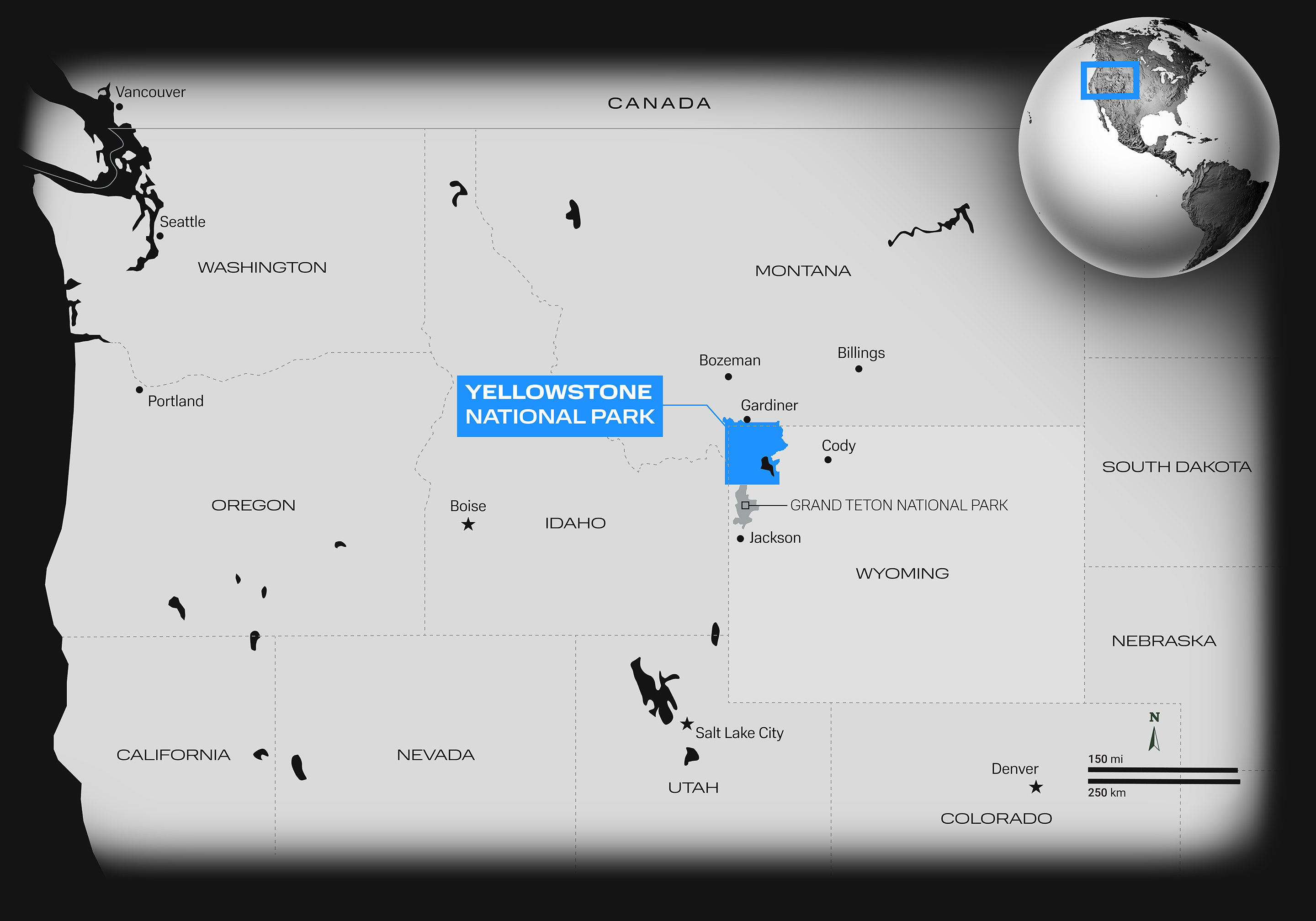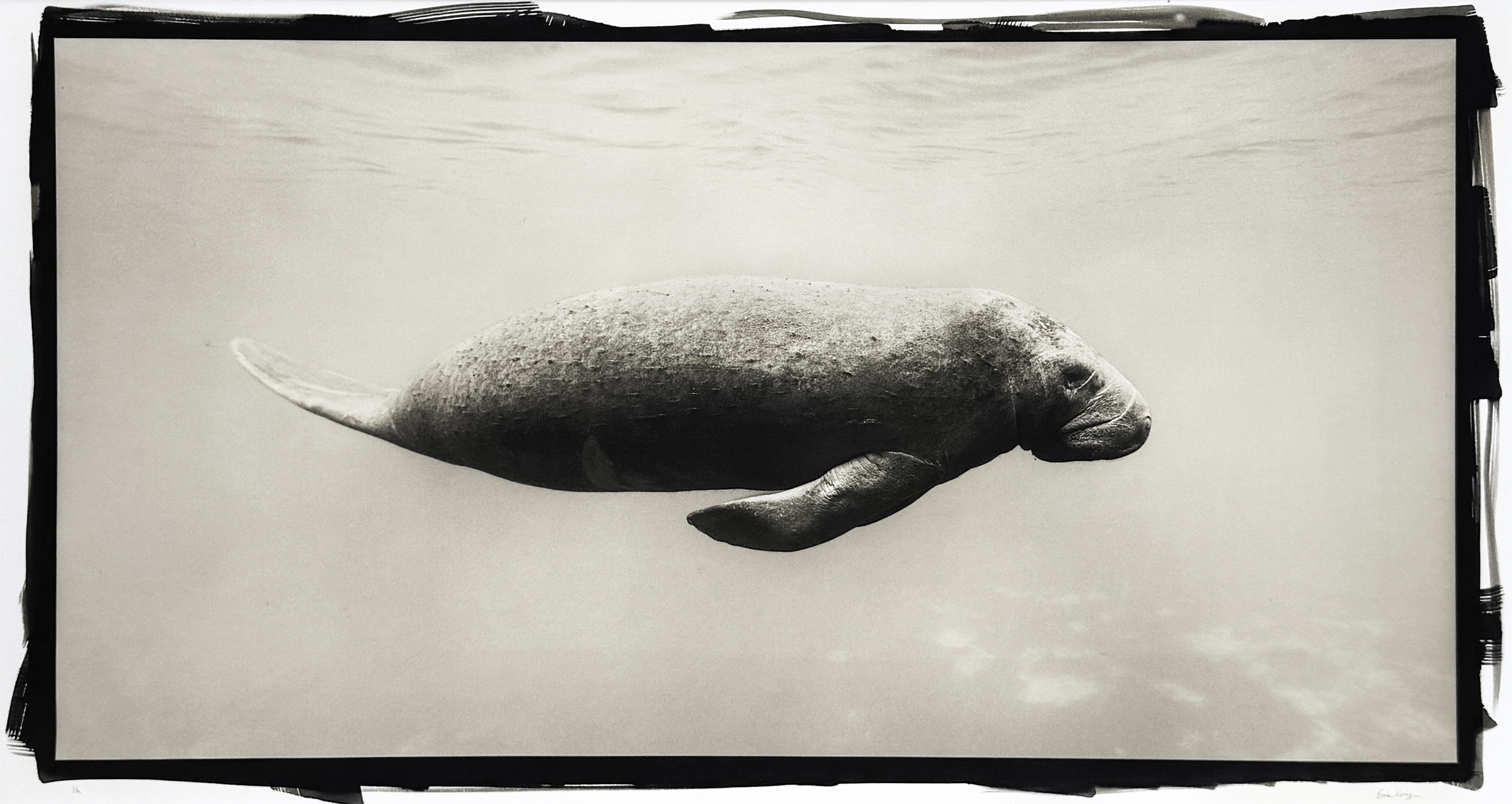
%20srgb.jpg)
%20srgb.jpg)

Beneath Yellowstone’s thousands of square miles of mountains, pine forests, lakes, and rivers lies a vast volcanic system—one that has given rise to more than ten thousand thermal features across the park. The most striking of these is the Grand Prismatic Spring.
The word “prismatic” comes from the Greek stem prisma, meaning “separated or distributed as if by a prism.” The color separation in Grand Prismatic Spring results from a temperature gradient that gives life to different types of thermophiles. Orange, brown, and green microorganisms thrive in the cooler waters around the spring's outer edges, while the yellow and colorless species survive in higher temperatures. At nearly 200°F, the spring's center is too hot for most of these heat-lovers, leaving the clear water that reflects the vivid cobalt blue we see.
Photographing landscapes comes with its own challenges, but capturing images thousands of feet up presents a few new ones.
There's no good way to prepare for leaning out of a helicopter at 120 miles per hour, shooting straight down as the wind blasts your arms backward. A fast shutter speed—typically an afterthought with landscapes—suddenly becomes paramount. At altitude, colder air and gloves restrict the second-nature handling of the camera.
When we reached Grand Prismatic, the pilot tilted the nimble R-44, angling us directly over the cauldron below. I knew I wanted to include people in the photograph—not just for scale, but to add a touch of realism to what otherwise feels like an abstract painting. From this height, they're mere specks, dwarfed by the canvas of heat and color.
I returned that afternoon with hundreds of photographs. Different angles, different details, different compositions, all revealing what the ground cannot.
This is the one that's stayed with me.
%20srgb.jpg)


LIMITED EDITION
A moment captured for a life on paper.
Eric works with a renowned print studio in Brooklyn, New York, known for decades of expertise in archival pigment printing. The local lab allows for a collaborative approach, ensuring that his intended vision is expressed in the final artwork. When cared for properly, archival pigment prints can last for over a century.
Archival Pigment Prints
Modern printmaking, refined. Pigment prints utilize state-of-the-art digital technology and high-quality pigment-based inks to achieve striking reproductions. A digital image is applied directly onto the paper using precision inkjet printers, ensuring both image quality and longevity.
Vision meets the surface. Archival papers differ in weight, material, and texture. A paper is chosen to best suit the intent of the piece, from satin finishes to enhance rich shadows and colors, to handmade Japanese rice paper that offers a more textured and vintage feel.
The edition size ensures that only the number of prints indicated will ever be produced. Each print is proofed, reviewed, numbered, and signed by Eric, and includes a Certificate of Authenticity that is unique to your artwork.
Prices from $3,500 USD
16'' x 24'' / 40.6 x 61 cm
Edition of 10 + 2 AP
26'' x 39'' / 66 x 99.1 cm
Edition of 8 + 2 AP
40'' x 60'' / 101.6 x 152.4 cm
Edition of 7 + 2 AP
56'' x 84'' / 142.2 x 213.4 cm
Edition of 3 + 2 AP

.webp)

Pigment-based inks and precision digital technology achieve striking reproductions. Each image is applied directly onto archival paper using high-fidelity inkjet printers, ensuring both image quality and longevity.

Archival papers differ in weight, material, and texture. Each is chosen to best suit the intent of the piece—from satin finishes that enhance shadows and color, to washi that offers a textured, tactile feel.

Silver gelatin prints are produced using traditional darkroom techniques that date back to the early 20th century. The image is exposed onto paper coated with a light-sensitive silver salt emulsion and developed through chemical processing.

The paper's gelatin layer captures intricate details and textures within an image. Prints reveal rich blacks and a broad tonal range, giving each piece a distinct dimensionality.
Each edition is strictly limited to the number of prints indicated. Every work is proofed, reviewed, signed, and accompanied by a numbered Certificate of Authenticity.
A select number of Artist Proofs are reserved for the artist, family, or collectors.


Platinum-palladium printing originated in the 19th century. It is a manual process requiring extensive preparation and craftsmanship, and some of the rarest metals on earth.
A digital photograph is converted to a negative of the image, which is then used in this traditional contact printing method.

Rich blacks, soft grays, and detail in shadows are unmatched, even by modern inkjet printers. Smooth tonal transitions and a warm appearance create a print that is uniquely platinum.
Black brush strokes around the edge of the image from the chemical application reveal the handmade nature of the piece—no two will ever be the same.

Platinum-palladium prints have an archival rating of more than 1,500 years.
A solution of noble metals is used to coat the paper, allowing for the print's longevity. When ultraviolet light is exposed through this digital negative onto the chemical layer, platinum particles become physically embedded in the fibers of the paper. These particles form the image, which is then developed in a chemical bath.
Each edition is strictly limited to the number of prints indicated. Every work is proofed, reviewed, signed, and accompanied by a numbered Certificate of Authenticity.
A select number of Artist Proofs are reserved for the artist, family, or collectors.
Drew selects the number Of prints Of Tared Of each image to protect your artwork's long term ideatity_ T edition size is shared across all prints regardless Of the sizes sold.
As an edition sells. the prices increase. When you acquire an image closer to its release. you are guaranteed the best pricing. The most accurate information on pricing will always be available on the website.
Drew selects the number Of prints Of Tared Of each image to protect your artwork's long term ideatity_ T edition size is shared across all prints regardless Of the sizes sold.
As an edition sells. the prices increase. When you acquire an image closer to its release. you are guaranteed the best pricing. The most accurate information on pricing will always be available on the website.
Drew selects the number Of prints Of Tared Of each image to protect your artwork's long term ideatity_ T edition size is shared across all prints regardless Of the sizes sold.
As an edition sells. the prices increase. When you acquire an image closer to its release. you are guaranteed the best pricing. The most accurate information on pricing will always be available on the website.
Drew selects the number Of prints Of Tared Of each image to protect your artwork's long term ideatity_ T edition size is shared across all prints regardless Of the sizes sold.
As an edition sells. the prices increase. When you acquire an image closer to its release. you are guaranteed the best pricing. The most accurate information on pricing will always be available on the website.
%20srgb.jpg)
For additional information on this print, including availability, pricing, or edition details, please complete the form below.